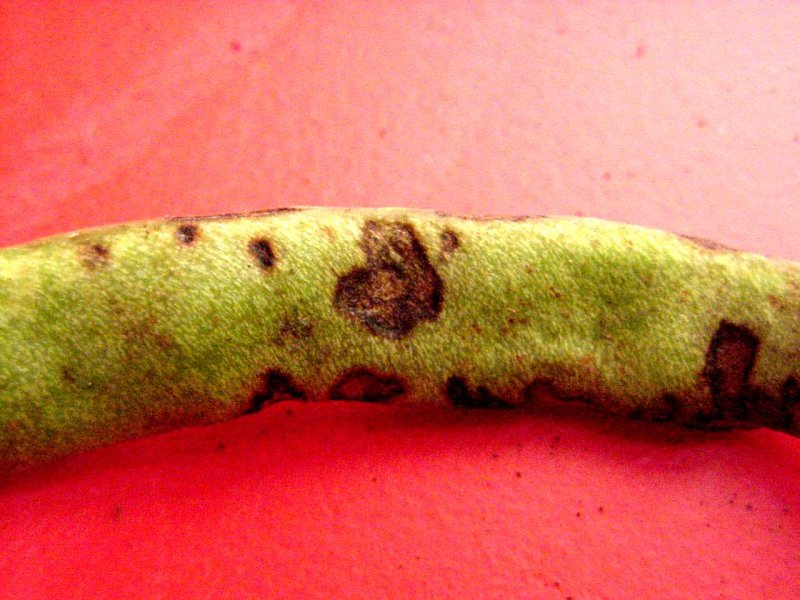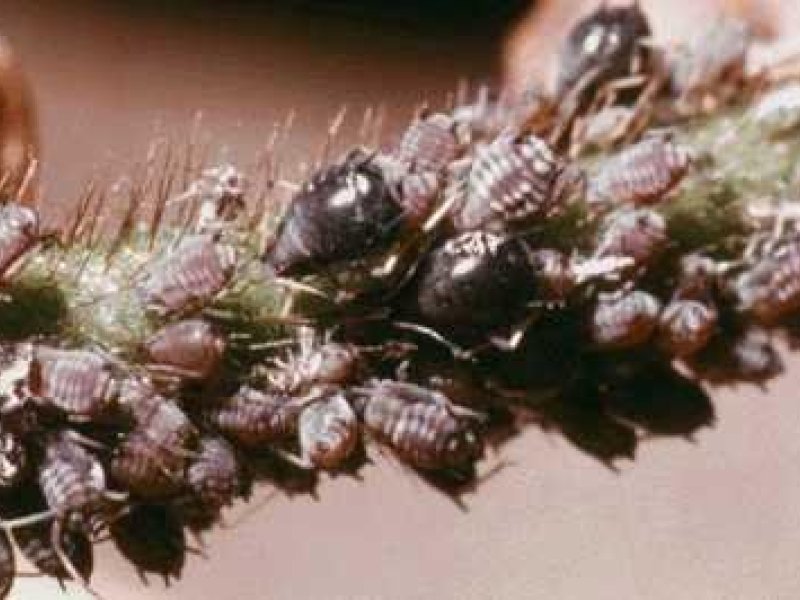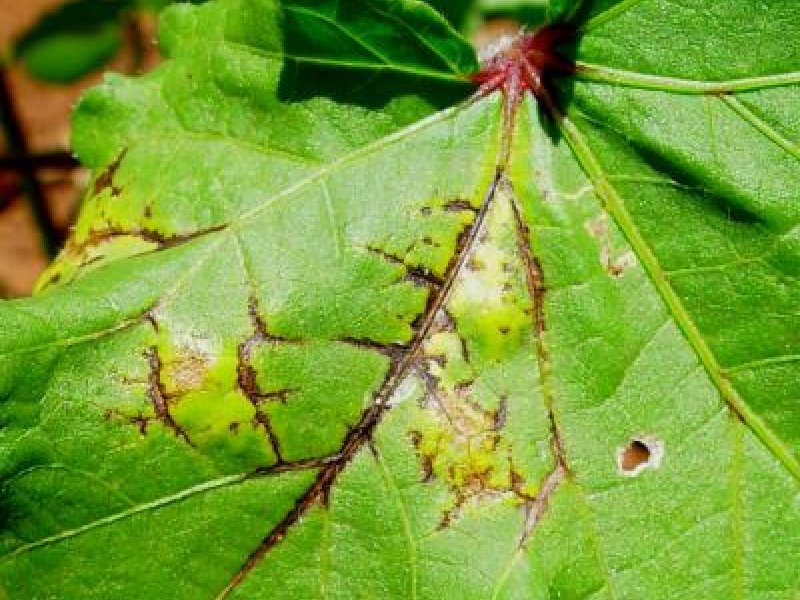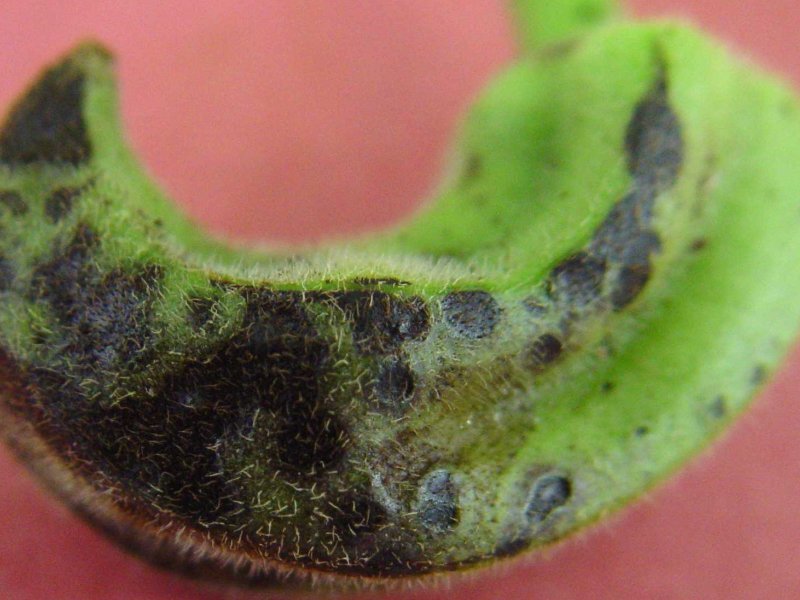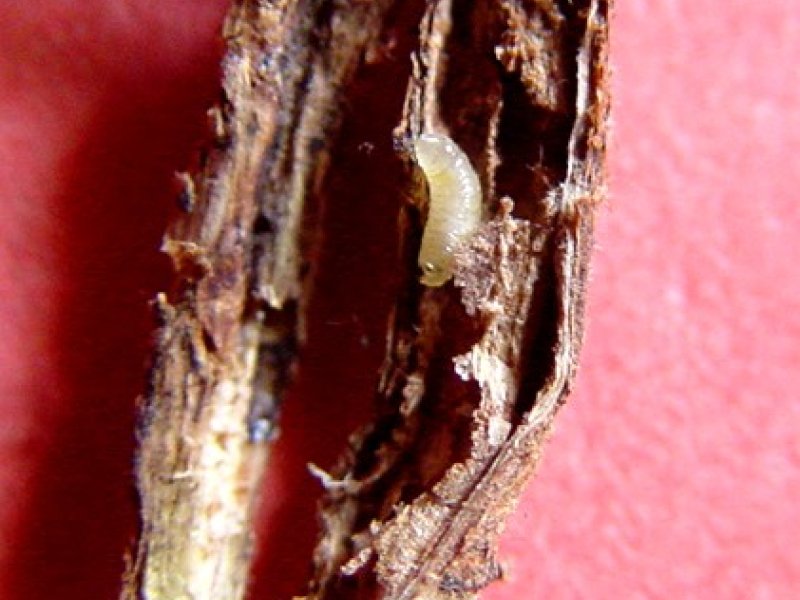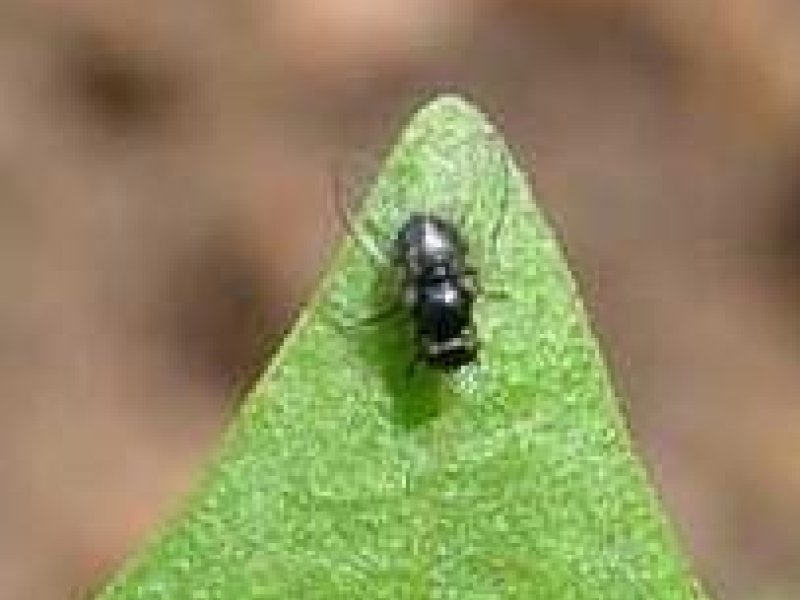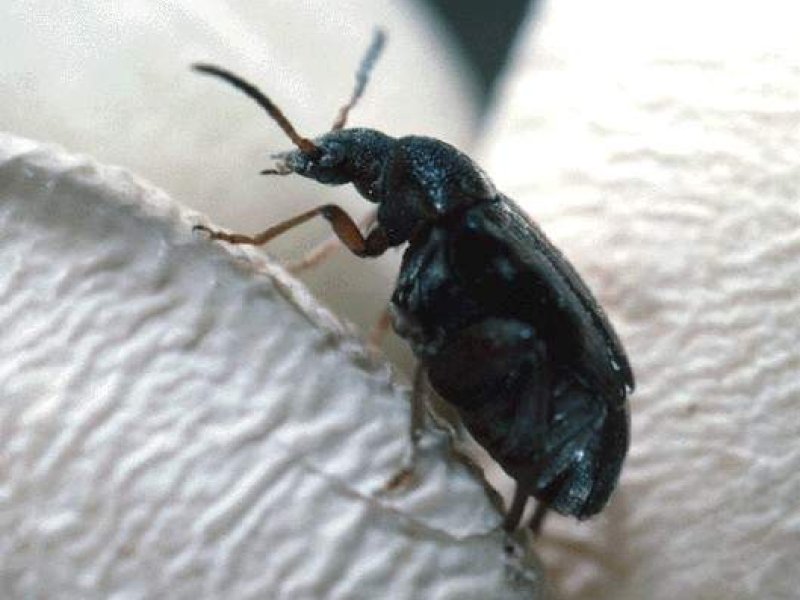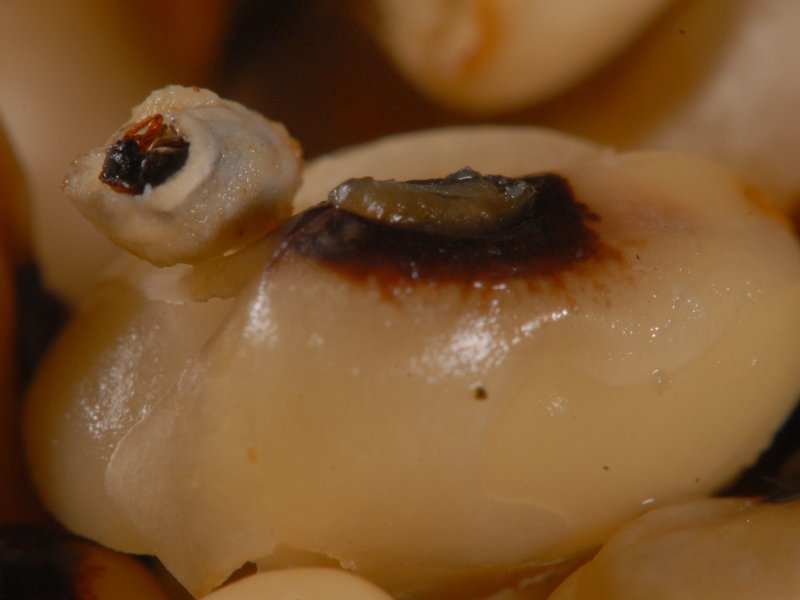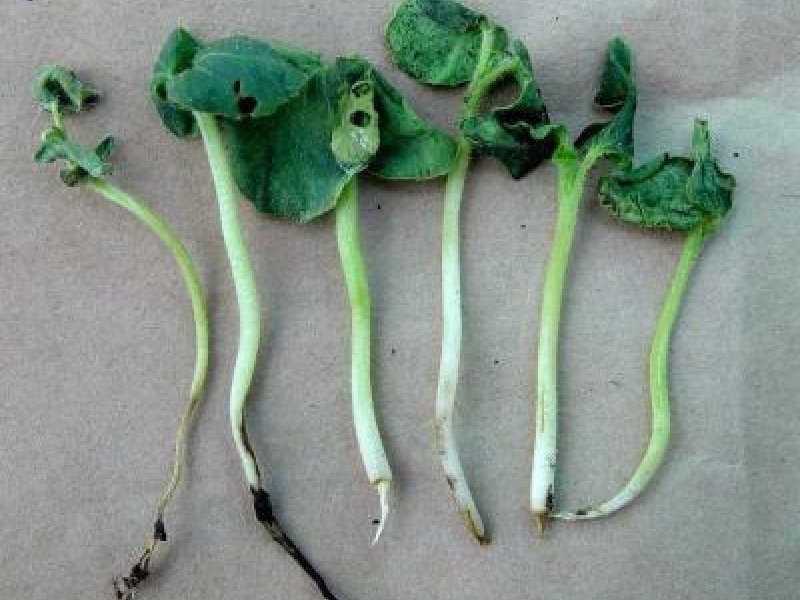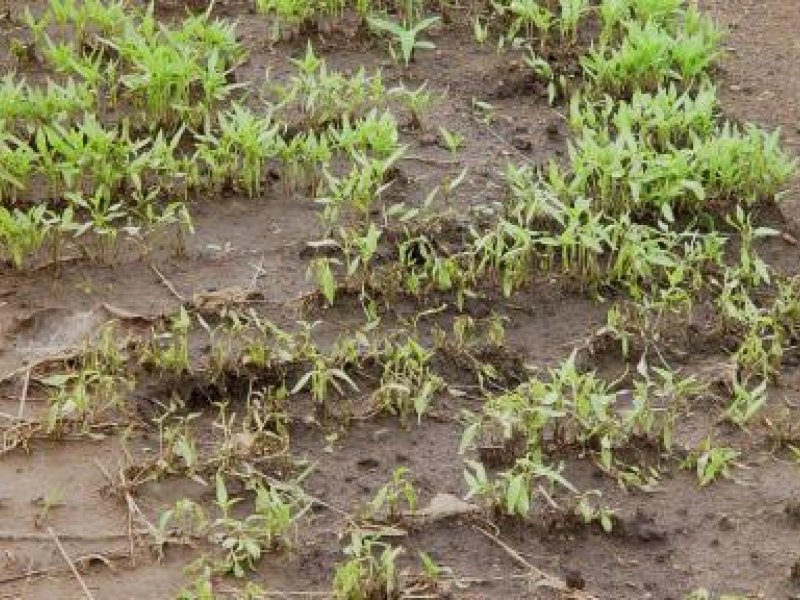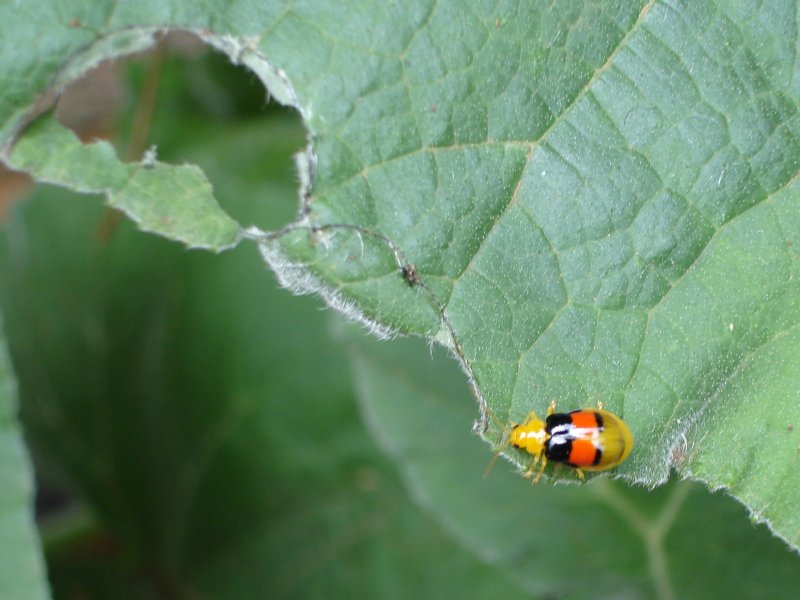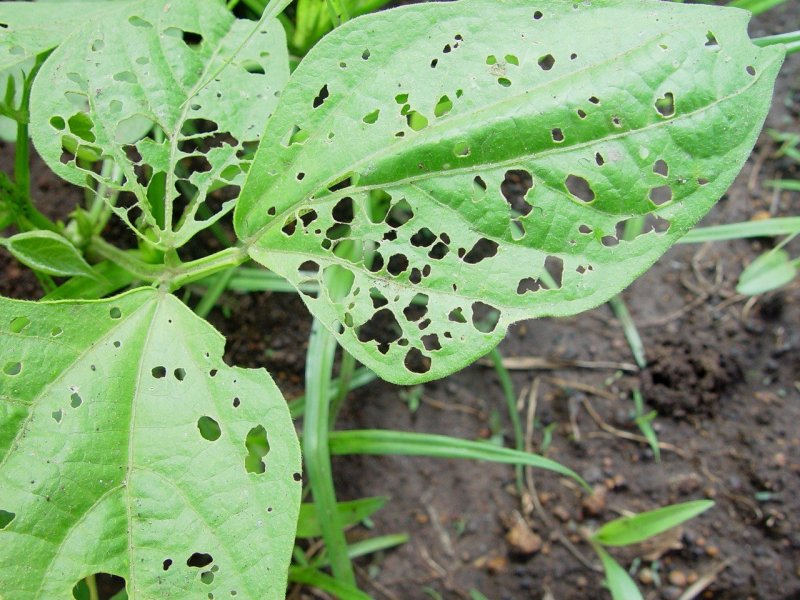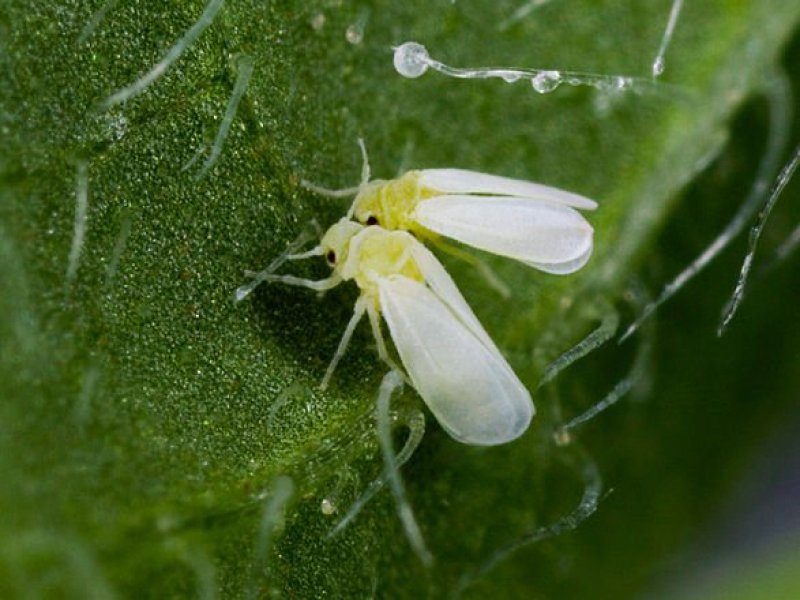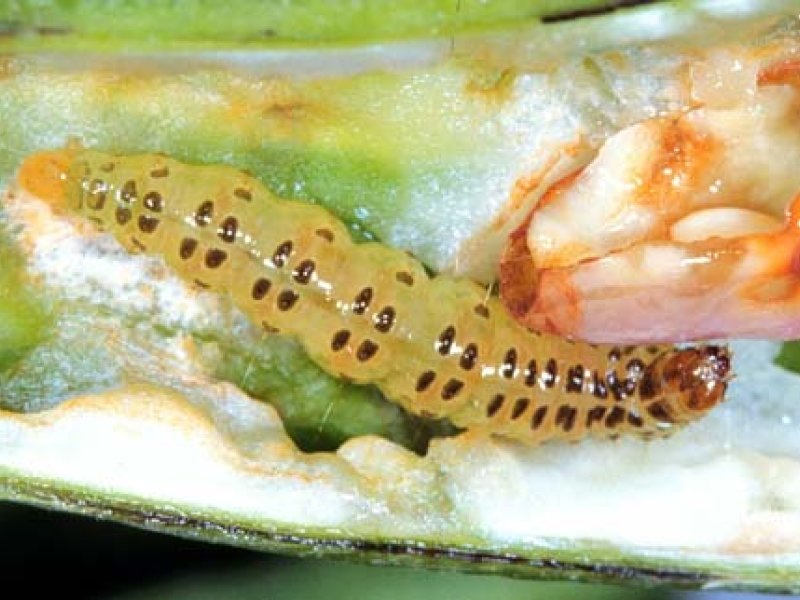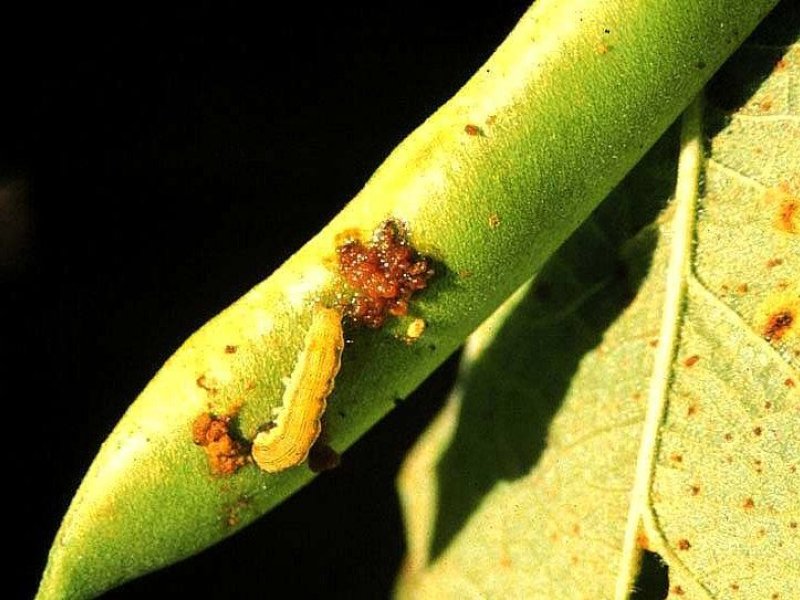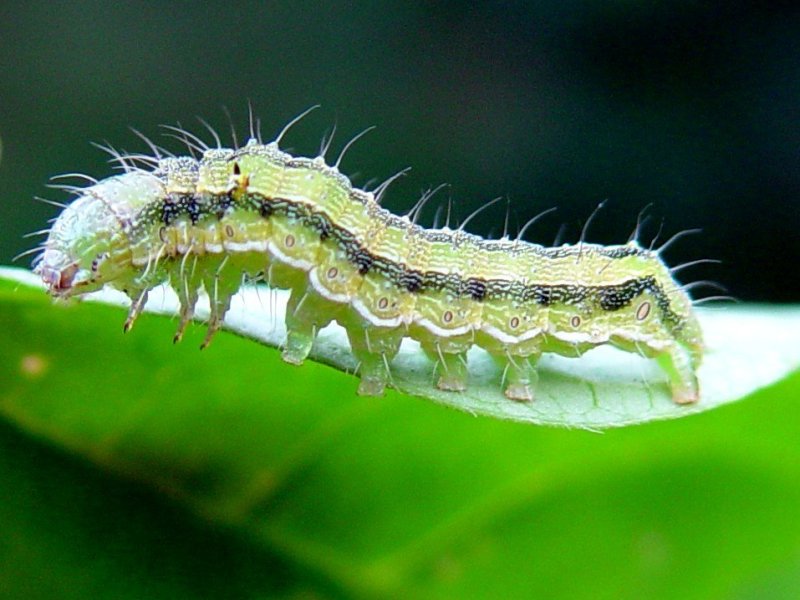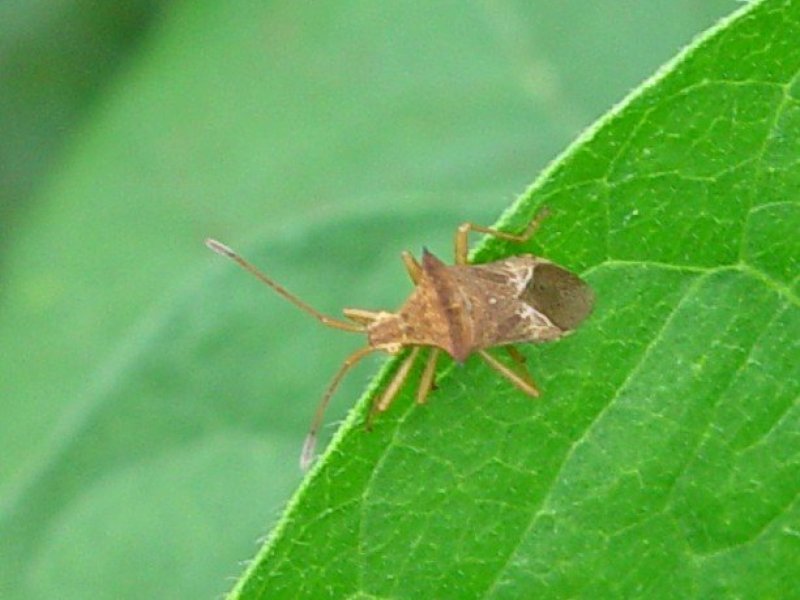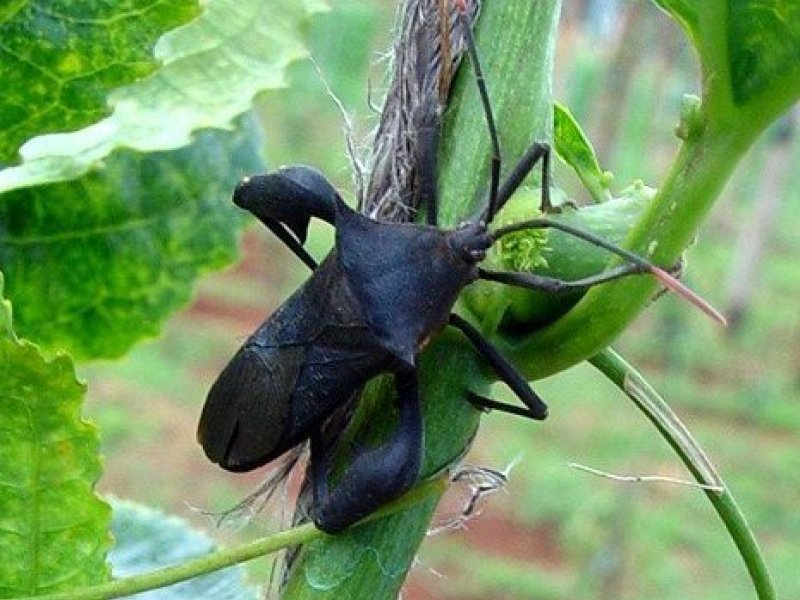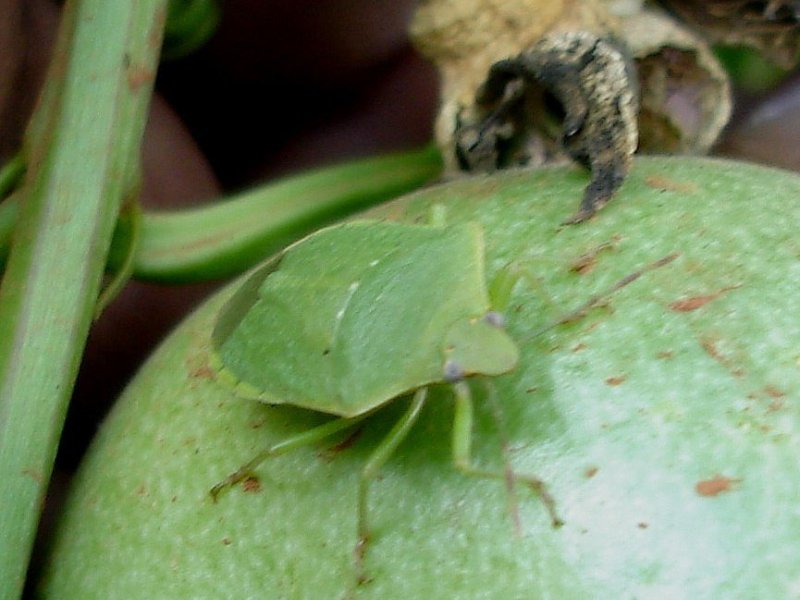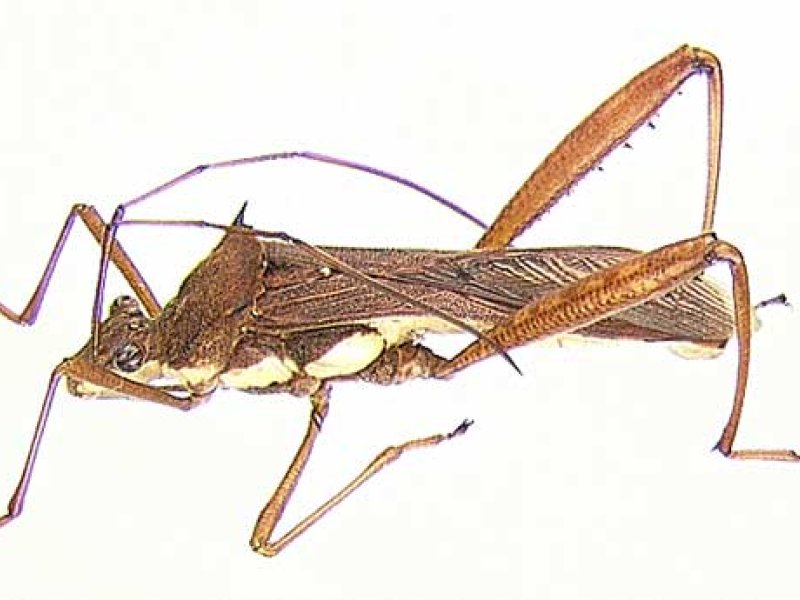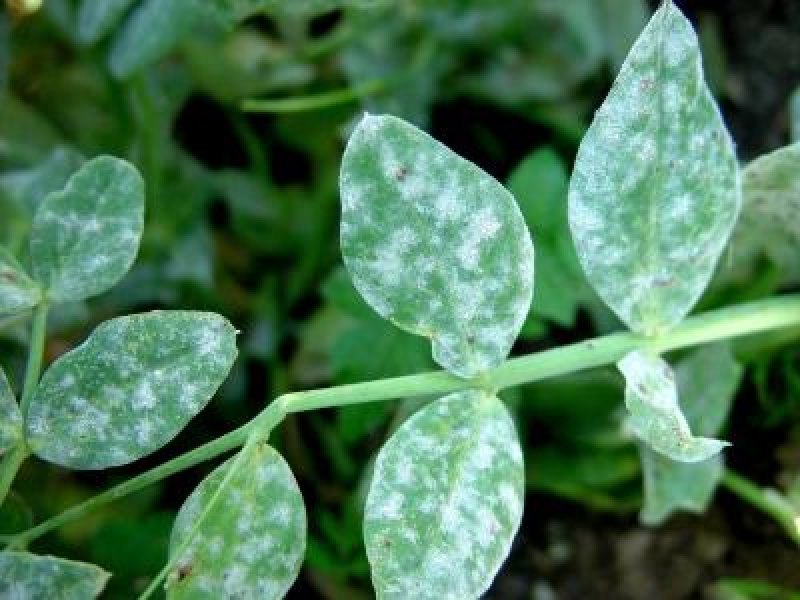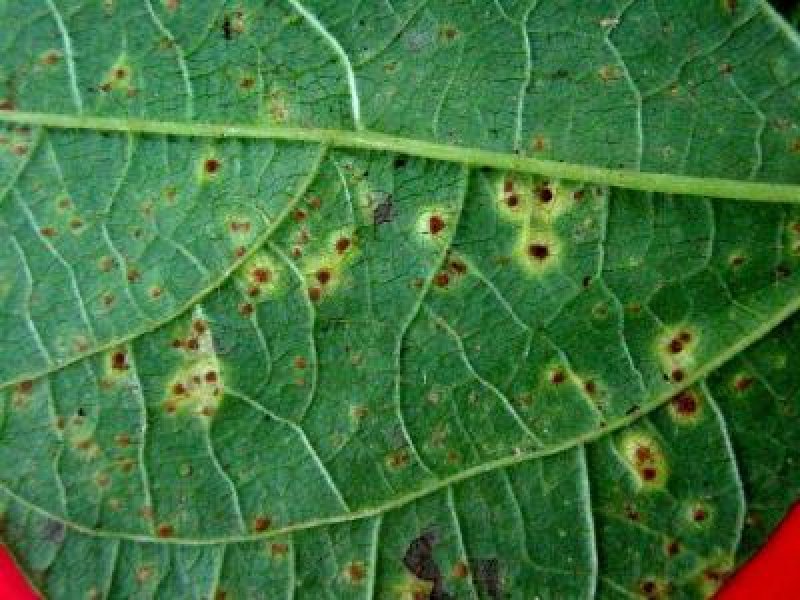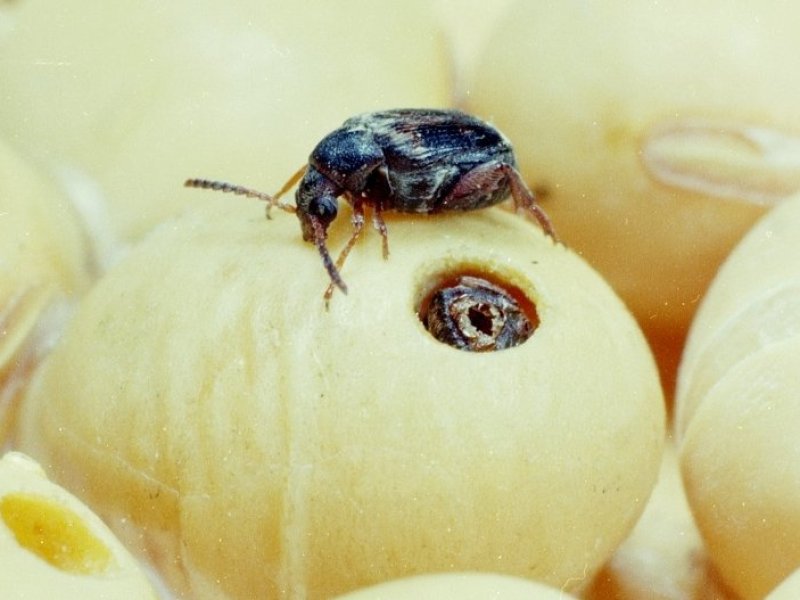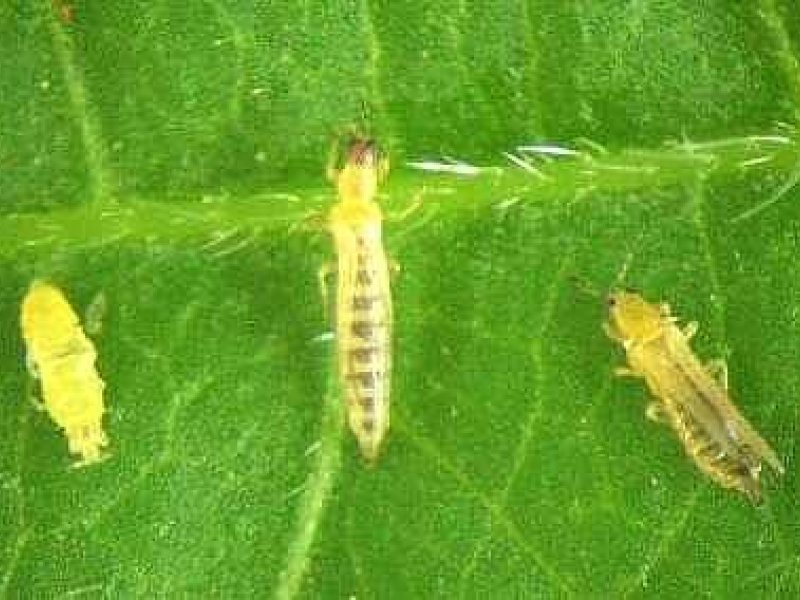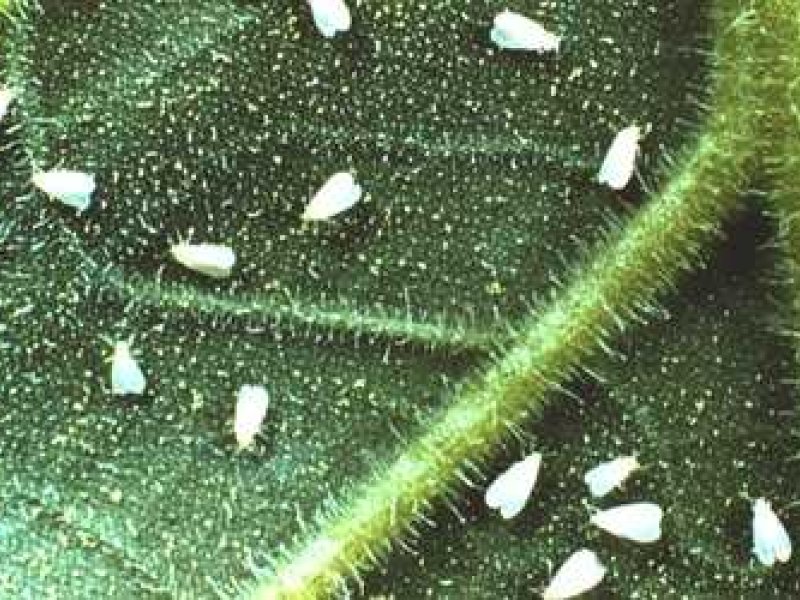|
Anthracnose (Colletotrichum lindemuthanium) It attacks all above ground parts of the plant. It does most serious damage on pods. Affected pods have brownish sunken spots, which under humid conditions are covered with a pink spore mass. Infected seeds become discoloured (brownish black).
|
|
|
What to do:
|
|
Aphids Aphids, mainly the legume aphid (Aphis craccivora) (also called groundnut aphid) are relative small. Immatures are slightly dusted with wax, adults without wax. Apterae are 1.4 to 2.2 mm long. Alatae (winged form) 1.4 to 2.1 mm. They feed on young plants, leaflets, stem and pods of green gram. Attacked young leaves become twisted. Excretion of honeydew leads to growth of sooty mould. Aphids are also vectors of virus diseases.
|
|
|
What to do:
|
|
Bacterial blight (bean blight) (Xanthomonas pv. phaseoli) Leaf spots first appear as small, water-soaked or light-green areas on leaflets. They later become dry and brown. The spots may join to affect much of leaf surface eventually killing the leaflet. Similar water-soaked spots develop on pods. The spot margin is a shade of red. Severely diseased pods shrivel. In humid weather, a yellowish crust of the blight bacteria covers the spot surface.
|
|
|
What to do:
|
|
Bean flies (Ophiomyia phaseoli and related species) Bean flies are tiny about 2 mm long, shiny black-bluish in colour. They can cause serious stand reductions at the seedling stage. Bean flies lay eggs in punctures of leaves near the petiole. The small white maggots feed inside the main stem just above the soil line. Pupation occurs inside the stem. The life cycle may be completed rapidly, often in less than 2 weeks. Seedlings attacked by bean flies may wilt or die. Leaves of older plants may be yellow and stunted. Stems are thicker than normal and cracked lengthwise just above the soil. Maggot feeding facilitates the entry of disease-causing microorganisms leading to secondary infections. In cases of heavy infestation, many plants die. Bean flies are important only during the seedling stage (up to 4 weeks after germination).
|
|
|
What to do:
|
|
Cowpea weevil (Callosobruchus maculatus) Cowpea bruchids (Callosobruchus spp.) are the most common and widespread insect pests in storage. Adults are 2 to 3.5 mm long. They are major pests of pulses (cowpeas, pigeon peas, soybean, green gram and lentils). They attack both pods in the field and seeds in storage. They attack nearly mature and dry pods. Infested stored seeds can be recognised by the round exit holes and the white eggs on the seed surface. Post-harvest losses are highly variable, but losses can be over 90%. It is a serious storage insect, which can destroy whole seed-lots. |
|
|
What to do:
|
|
Damping-off diseases (Pythium spp., Fusarium spp., Rhizoctonia solani) They are caused by a complex of fungi. They cause rotting of seeds before emergence and seedlings after emergence from the soil. Affected fields appear patchy. They are favoured by wet, cool weather.
|
|
|
What to do:
|
|
Foliage beetles (Ootheca spp.) Foliage beetles have been reported as pests of green grams in West Africa. They are a threat, when present in large numbers since they can defoliate young plants. They are 4-7mm long.
|
|
|
What to do:
|
|
Mungbean yellow mosaic virus (MYMV) MYMV causes serious loss in pulse crops such as beans, pigeonpea, mungbean and soybean. It is transmitted by whiteflies (Bemisia tabaci). Symptoms: initially mild scattered yellow spots appear on young leaves. The spots gradually increase in size and ultimately some leaves turn completely yellow. Infected leaves also show necrotic symptoms. Diseased plants are stunted, mature late and produce very few flowers and pods. Pods of infected plants are reduced in size and turn yellow in colour. The virus is not seed transmitted in mungbean or soybean. |
|
|
What to do:
|
|
Pod borers (African bollworm, Legume pod-borer, lima pod borer) Pod borers such as the African bollworm (Helicoverpa armiguera), the legume pod borer (Maruca vitrata), and the lima bean pod borer (Etiella zinckenella) can cause serious economic damage. Young caterpillars of the African bollworm feed on leaves by scraping tissue for short time, and then bore into the pods and feed on the seeds with their heads thrust inside and most part of the body outside. The entry hole is large and circular. They also cause significant damage to flower buds and flowers. Caterpillars of the legume pod borer (Maruca vitrata) are dull to yellow-white and often reach a length of 18 mm. Each segment has dark spots that form a distinct series along the length of the body. The head is dark brown to black. Caterpillars web together leaves, buds and pods and feed inside the web. Flowers attacked may be discoloured and have damaged or missing reproductive parts. Damage by this caterpillar also results in flower bud shedding and reduced pod production. Damaged pods have small, darkened entry holes on the surface. Young caterpillars of the lima bean pod borer are green, later turning red. They feed inside the pod reaching a length of 14 mm. They are generally found in maturing and dried pods. Faeces in the form of granules are found inside the damaging pods. Once the caterpillars have entered the pods they are difficult to control and by then they have already caused damage. |
|
|
What to do:
For more information on Neem click here. For information on Bt click here |
|
Pod sucking bugs Pod sucking bugs such as giant coreid bugs (Anoplocnemis curvipes), spiny brown bugs (Clavigralla spp.), green stink bugs (Nezara viridula, Acrosternum acutum), and Riptortus bugs (Riptortus spp) are the most important pests of green gram at the podding stage. They suck sap from pods and seeds and cause various levels of damage depending on the stage of growth of seeds at the time of attack. Feeding may cause necrosis, pod malformation, premature drying, shrivelling of seeds, loss of germination ability, and formation of empty pods. Bugs are difficult to control since they usually feed on a wide range of crops and are very mobile.
|
|
|
What to do:
|
|
Powdery mildew (Erysiphe polygoni) White powdery patches appear on leaves and other green parts, which later become dull coloured. These patches gradually increase in size and become circular covering the lower surface. When the infection is severe, both the surfaces of the leaves are completely covered by whitish powdery growth. Severely affected parts get shrivelled and distorted. In severe infections, foliage becomes yellow causing premature defoliation. The disease also creates forced maturity of the infected plants which results in heavy yield losses. The fungal agent (pathogen) has a wide host range and survives on various hosts in off-season. It is spread by wind and water splash.
|
|
|
What to do:
|
|
Rust (Uromyces phaseoli) The disease appears as circular reddish brown pustules (blisters) which appear more commonly on the underside of the leaves, less abundant on pods and sparingly on stems. When leaves are severely infected, both the surfaces are fully covered by rust pustules. Shrivelling of pods is followed by defoliation resulting in yield losses. Long distance spread of rust is by wind. Plant to plant spread is by farm tools, and moving bodies within the crop.
|
|
|
What to do:
|
|
Storage pests The pod weevil (Piezotrachelus varius or Apion varium). Its a common pest of cowpeas in West Africa. Generally 13-26% of the pods are damaged. Losses of seeds up to 92% have been reported in Nigeria. The shiny black weevils bore holes in fresh green cowpea pods and lay eggs into the pods. The grubs feed on the seeds and pupate within the pods.
|
|
|
What to do:
|
|
Flower thrips (Megalurothrips sjostedti) It may feed on petioles and leaves, but prefer flowers. Attacked petioles and leaves have tiny holes surrounded by discoloured areas. Affected flowers are brown, dried, or completely distorted. The flowers drop prematurely. Thrips also feed on pollen leading to decrease in pollination and seed set. Pod production is low and pods are deformed.
|
|
|
What to do:
|
|
Whiteflies (Bemisia tabaci, Aleurodicus dispersus) Several species of whiteflies are found on cassava in Africa. Feeding causes direct damage, which may cause considerable reduction in root yield if prolonged feeding occurs. Some whiteflies cause major damage to cassava as vectors of cassava viruses. The spiralling whitefly (Aleurodicus dispersus) was reported as a new pest of cassava in West Africa in the early 90s. The adults and nymphs of this whitefly occur in large numbers on the lower surfaces of leaves covered with large amount of white waxy material. Females lay eggs on the lower leaf surface in spiral patterns (like fingerprints) of white material secreted by the female. This whitefly sucks sap from cassava leaves. It excretes large amounts of honeydew, which supports the growth of black sooty mould on the plant, causing premature fall of older leaves. The tobacco whitefly (Bemisia tabaci) transmits the African cassava mosaic virus, one of the most important factors limiting production in Africa. The adults and nymphs of the tobacco whitefly occur on the lower surface of young leaves. They are not covered with white material. The nymphs appear as pale yellow oval specks to the naked eye. |
|
|
What to do:
|
Geographical Distribution in Africa
Geographical Distribution of Green gram in Africa. Updated on 8 July 2019. Source PROTA
General Information and Agronomic Aspects
Grams are annual legume crops grown for their seed. Grams could be green, black or yellow in colour. The green grams are the most commonly grown in Kenya. Grams are native crops of India. Often called green gram or golden, it is cultivated in several countries of Asia, Africa, and the Americas. The dried beans are prepared by cooking or milling. They are eaten whole or split. The seeds or the flour may be used in a variety of dishes like soups, porridge, snacks, bread, noodles and even ice cream. Green gram also produces great sprouts, which can be sold in health food shops or eaten at home. Crop residues of V. radiata are a useful fodder. Green gram is sometimes specifically grown for hay, green manure or as a cover crop.
Nutritive Value per 100 g of edible Portion
| Raw or Cooked Green Gram |
Food Energy (Calories / %Daily Value*) |
Carbohydrates (g / %DV) | Fat (g / %DV) | Protein (g / %DV) | Calcium (g / %DV) | Phosphorus (mg / %DV) | Iron (mg / %DV) | Potassium (mg / %DV) | Vitamin A (I.U) | Vitamin C (I.U) | Vitamin B 6 (I.U) | Vitamin B 12 (I.U) | Thiamine (mg / %DV) | Riboflavin (mg / %DV) | Ash (g / %DV) |
| Green Gram cooked | 105 / 5% | 19.2 / 6% | 0.4 / 1% | 7.0 / 14% | 27.0 / 3% | 99.0 / 10% | 1.4 / 8% | 266 / 8% | 24.0 IU / 0% | 1.0 / 2% | 0.1 / 3% | 0.0 / 0% | 0.2 / 11% | 0.1 / 4% | 0.8 |
| Green Gram raw | 347 / 17% | 62.6 / 21% | 1.2 / 2% | 23.9 / 48% | 132.0 / 13% | 367 / 37% | 6.7 / 37% | 1246 / 36% | 114 IU / 2% | 4.8 / 8% | 0.4 / 19% | 0.0 / 0% | 0.6 / 41% | 0.2 / 14% | 3.3 |
| Green Gram sprouted raw | 30.0 / 2% | 5.9 / 2% | 0.2 / 0% | 3.0 / 6% | 13.0 / 1% | 54.0 / 5% | 0.9 / 5% | 149 / 4% | 21.0 IU / 0% | 13.2 / 22% | 0.1 / 4% | 0.0 / 0% | 0.1 / 6% | 0.1 / 7% | 0.4 |
*Percent Daily Values (DV) are based on a 2000 calorie diet. Your daily values may be higher or lower, depending on your calorie needs.
Climatic conditions, soil and water management
Green grams grow best at an altitude of 0-1600 m above sea level and under warm climatic conditions (28 to 30°C). They are well adapted to red sandy loam soils, but also do reasonably well on not too exhausted sandy soils. Green grams are not tolerant to wet, poorly drained soils. They are drought tolerant and will give reasonable yields with as little as 650 mm of yearly rainfall. Heavy rainfall results in increased vegetative growth with reduced pod setting and development.
Propagation and planting
Avoid planting green gram for more than one season because toxic residues and disease organisms from the previous green gram crop may affect the following crop adversely.
Land should be prepared to a medium tilth before planting and early enough so that planting can start immediately after the rain starts. When using oxen plough for planting, place the seed at the side of the furrow.
Propagation is by seed. There is no seed dormancy. Seeds may sprout in the pod under very humid conditions. In areas with higher rainfall, it is recommended to grow green grams on raised beds. Prepare the beds, raised about 20 cm and spaced 1 m from the centre of one bed to the centre of the next. Sow seeds on raised beds in two rows per bed, spaced 45 cm apart.
Green grams will respond to fertiliser or manure application but will normally give satisfactory results if grown on relatively good soil. Green gram is grown mainly on smallholdings, often as mixed crops or intercrops. Associated crops are usually of longer duration than green gram (sugar-cane, cotton, sorghum). To make use of a short cropping period, short-duration green gram is often relay-cropped.
Green gram (mung beans) varieties
| Variety | Maturity Days | Potential yield t/ha | Remarks |
| "KVR 22" ("N 22") | 80-90 | 1.0-1.3 |
|
| "KVR 26" (N 26) | 60-65 | 0.3-1.5 |
|
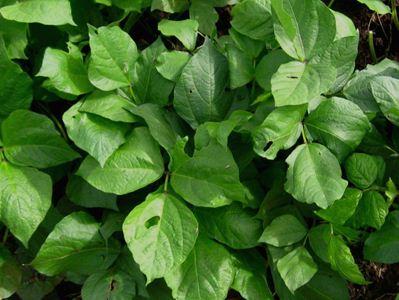 |
| Mungbean plant |
|
© A.A.Seif, icipe
|
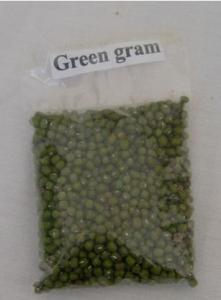 |
| Green gram seeds |
|
© A.A.Seif, icipe
|
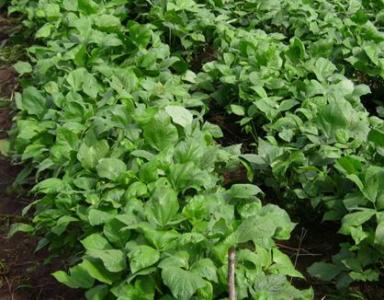 |
| Mungbean crop |
|
© A.A.Seif, icipe |
Examples of green grams varieties grown in Tanzania
- "Nuru" (performs well between 0 and 1350 m above sea level; days to flowering: 50; yield potential: 1.5 t/ha; resistant to mosaic disease; moderately resistant to bacterial blight)
- "Imara" (grows well between 0 and 1350 m above sea level; days to flowering: 50; yield potential: 1.5 t/ha; resistant to mosaic disease; moderately resistant to bacterial blight; it has wide adaptability)
Examples of green gram varieties grown in Uganda
- "N 26" (characteristics as in Kenya)
- "N 22" (characteristics as in Kenya)
Husbandry
With the newer cultivars ripening in 60 to 75 days, maximum yields are obtained at plant densities of 300 to 400,000 plants per ha. The later-maturing traditional cultivars generally need wider spacing. Usually no fertilisers are applied to green gram. Over the centuries, green grams adaptation to stable performance in marginal environments has resulted in a low yield potential, which limits responsiveness to better environments and improved cultural practices. However, if planted in heavily eroded soil gram will benefit from any kind of manure or compost.
Grams planted at the end of the long rains are normally intercropped into other major crop. In Meru, Kenya, green gram is a preferred intercrop for millet, each said to protect the other against diseases and pests. If grams are intercropped with maize, the maize spacing is the same as in pure stand, but the grams are interplanted mid-way between the maize rows. Early weeding is recommended. First weeding should be done just after emergence and second weeding just before flowering.
Harvesting
Harvesting is generally by two to five hand-pickings at weekly intervals and is the most expensive single operation in growing green gram. Short-duration cultivars, which ripen more uniformly, may be processed as whole plants on small rice threshers.Cultivars differ markedly in harvesting efficiency, depending on position (above or within canopy) and size of pods. Harvesting before the maturity of crop, usually result in lower yields, higher proportion of immature seeds, poor grain quality and more chances of infestation during storage. Delay in harvesting results in shattering of pods and other losses caused by pests.
In Kenya, harvesting when 95% of pods have turned black is recommended. The whole plant can then be uprooted and dried for about 2 days, then threshed and winnowed. Harvesting during adverse weather condition i.e. rains and overcast weather should be avoided. Such weather is conducive to fungal infection. The harvested bundles should be kept in one direction in order to ascertain efficient threshing. They should be stacked in a dry, clean place in cubical way to facilitate circulation of the air around.
Storage
Grams must be dry before storage. Like most pulses moisture content at storage should not be above 13%. Grams are very susceptible to bruchid (bean weevil) attack and are best stored immediately after sun drying either in airtight drums tins, gunny bags and be kept in a clean, ventilated place. Mixing seed with ash is effective against bruchids, also treatment with sunflower oil or mixing with neem leaves is said to be effective against storage pests. Proper drying of grains is very important to prevent the growth of fungi and contamination with aflatoxins. Infected grains should be separated from sound grains to avoid aflatoxin contamination.
Information on Pests
| Bean flies (Ophiomyia phaseoli and related species) Bean flies are tiny about 2 mm long, shiny black-bluish in colour. They can cause serious stand reductions at the seedling stage. Bean flies lay eggs in punctures of leaves near the petiole. The small white maggots feed inside the main stem just above the soil line. Pupation occurs inside the stem. The life cycle may be completed rapidly, often in less than 2 weeks. Seedlings attacked by bean flies may wilt or die. Leaves of older plants may be yellow and stunted. Stems are thicker than normal and cracked lengthwise just above the soil. Maggot feeding facilitates the entry of disease-causing microorganisms leading to secondary infections. In cases of heavy infestation, many plants die. Bean flies are important only during the seedling stage (up to 4 weeks after germination).
What to do:
|
| Whiteflies (Bemisia tabaci, Aleurodicus dispersus) Several species of whiteflies are found on cassava in Africa. Feeding causes direct damage, which may cause considerable reduction in root yield if prolonged feeding occurs. Some whiteflies cause major damage to cassava as vectors of cassava viruses. The spiralling whitefly (Aleurodicus dispersus) was reported as a new pest of cassava in West Africa in the early 90s. The adults and nymphs of this whitefly occur in large numbers on the lower surfaces of leaves covered with large amount of white waxy material. Females lay eggs on the lower leaf surface in spiral patterns (like fingerprints) of white material secreted by the female. This whitefly sucks sap from cassava leaves. It excretes large amounts of honeydew, which supports the growth of black sooty mould on the plant, causing premature fall of older leaves. The tobacco whitefly (Bemisia tabaci) transmits the African cassava mosaic virus, one of the most important factors limiting production in Africa. The adults and nymphs of the tobacco whitefly occur on the lower surface of young leaves. They are not covered with white material. The nymphs appear as pale yellow oval specks to the naked eye. What to do:
|
| Aphids, mainly the legume aphid (Aphis craccivora) (also called groundnut aphid) are relative small. Immatures are slightly dusted with wax, adults without wax. Apterae are 1.4 to 2.2 mm long. Alatae (winged form) 1.4 to 2.1 mm. They feed on young plants, leaflets, stem and pods of green gram. Attacked young leaves become twisted. Excretion of honeydew leads to growth of sooty mould. Aphids are also vectors of virus diseases.
What to do:
|
| Foliage beetles (Ootheca spp.) Foliage beetles have been reported as pests of green grams in West Africa. They are a threat, when present in large numbers since they can defoliate young plants. They are 4-7mm long.
What to do:
|
| Pod borers (African bollworm, Legume pod-borer, lima pod borer) Pod borers such as the African bollworm (Helicoverpa armiguera), the legume pod borer (Maruca vitrata), and the lima bean pod borer (Etiella zinckenella) can cause serious economic damage. Young caterpillars of the African bollworm feed on leaves by scraping tissue for short time, and then bore into the pods and feed on the seeds with their heads thrust inside and most part of the body outside. The entry hole is large and circular. They also cause significant damage to flower buds and flowers. Caterpillars of the legume pod borer (Maruca vitrata) are dull to yellow-white and often reach a length of 18 mm. Each segment has dark spots that form a distinct series along the length of the body. The head is dark brown to black. Caterpillars web together leaves, buds and pods and feed inside the web. Flowers attacked may be discoloured and have damaged or missing reproductive parts. Damage by this caterpillar also results in flower bud shedding and reduced pod production. Damaged pods have small, darkened entry holes on the surface. Young caterpillars of the lima bean pod borer are green, later turning red. They feed inside the pod reaching a length of 14 mm. They are generally found in maturing and dried pods. Faeces in the form of granules are found inside the damaging pods. Once the caterpillars have entered the pods they are difficult to control and by then they have already caused damage. What to do:
For more information on Neem click here. For information on Bt click here |
| Pod sucking bugs such as giant coreid bugs (Anoplocnemis curvipes), spiny brown bugs (Clavigralla spp.), green stink bugs (Nezara viridula, Acrosternum acutum), and Riptortus bugs (Riptortus spp) are the most important pests of green gram at the podding stage. They suck sap from pods and seeds and cause various levels of damage depending on the stage of growth of seeds at the time of attack. Feeding may cause necrosis, pod malformation, premature drying, shrivelling of seeds, loss of germination ability, and formation of empty pods. Bugs are difficult to control since they usually feed on a wide range of crops and are very mobile.
What to do:
|
| Flower thrips (Megalurothrips sjostedti) It may feed on petioles and leaves, but prefer flowers. Attacked petioles and leaves have tiny holes surrounded by discoloured areas. Affected flowers are brown, dried, or completely distorted. The flowers drop prematurely. Thrips also feed on pollen leading to decrease in pollination and seed set. Pod production is low and pods are deformed.
What to do:
|
| Cowpea weevil (Callosobruchus maculatus) Cowpea bruchids (Callosobruchus spp.) are the most common and widespread insect pests in storage. Adults are 2 to 3.5 mm long. They are major pests of pulses (cowpeas, pigeon peas, soybean, green gram and lentils). They attack both pods in the field and seeds in storage. They attack nearly mature and dry pods. Infested stored seeds can be recognised by the round exit holes and the white eggs on the seed surface. Post-harvest losses are highly variable, but losses can be over 90%. It is a serious storage insect, which can destroy whole seed-lots. What to do:
|
| The pod weevil (Piezotrachelus varius or Apion varium). Its a common pest of cowpeas in West Africa. Generally 13-26% of the pods are damaged. Losses of seeds up to 92% have been reported in Nigeria. The shiny black weevils bore holes in fresh green cowpea pods and lay eggs into the pods. The grubs feed on the seeds and pupate within the pods.
What to do:
|
Information on Diseases
| Bacterial blight (bean blight) (Xanthomonas pv. phaseoli) Leaf spots first appear as small, water-soaked or light-green areas on leaflets. They later become dry and brown. The spots may join to affect much of leaf surface eventually killing the leaflet. Similar water-soaked spots develop on pods. The spot margin is a shade of red. Severely diseased pods shrivel. In humid weather, a yellowish crust of the blight bacteria covers the spot surface.
What to do:
|
| Powdery mildew (Erysiphe polygoni) White powdery patches appear on leaves and other green parts, which later become dull coloured. These patches gradually increase in size and become circular covering the lower surface. When the infection is severe, both the surfaces of the leaves are completely covered by whitish powdery growth. Severely affected parts get shrivelled and distorted. In severe infections, foliage becomes yellow causing premature defoliation. The disease also creates forced maturity of the infected plants which results in heavy yield losses. The fungal agent (pathogen) has a wide host range and survives on various hosts in off-season. It is spread by wind and water splash.
What to do:
|
| The disease appears as circular reddish brown pustules (blisters) which appear more commonly on the underside of the leaves, less abundant on pods and sparingly on stems. When leaves are severely infected, both the surfaces are fully covered by rust pustules. Shrivelling of pods is followed by defoliation resulting in yield losses. Long distance spread of rust is by wind. Plant to plant spread is by farm tools, and moving bodies within the crop.
What to do:
|
| Damping-off diseases (Pythium spp., Fusarium spp., Rhizoctonia solani) They are caused by a complex of fungi. They cause rotting of seeds before emergence and seedlings after emergence from the soil. Affected fields appear patchy. They are favoured by wet, cool weather.
What to do:
|
| Anthracnose (Colletotrichum lindemuthanium) It attacks all above ground parts of the plant. It does most serious damage on pods. Affected pods have brownish sunken spots, which under humid conditions are covered with a pink spore mass. Infected seeds become discoloured (brownish black).
What to do:
|
| Mungbean yellow mosaic virus (MYMV) MYMV causes serious loss in pulse crops such as beans, pigeonpea, mungbean and soybean. It is transmitted by whiteflies (Bemisia tabaci). Symptoms: initially mild scattered yellow spots appear on young leaves. The spots gradually increase in size and ultimately some leaves turn completely yellow. Infected leaves also show necrotic symptoms. Diseased plants are stunted, mature late and produce very few flowers and pods. Pods of infected plants are reduced in size and turn yellow in colour. The virus is not seed transmitted in mungbean or soybean. What to do:
|
Information Source Links
- AIC (2002). Field Crops Technical Handbook.
- Adamu, R. S., Dike, M. C., Akpa, A. D. (2001). Insect fauna associated with green gram (Vigna radiata (L.) Wilc.) in the Northern Guinea Savanna of Nigeria. Journal of Sustainable Agriculture and the Environment, (Vol. 3) (No. 2) 331-336.
- CAB International (2005). Crop Protection Compendium, 2005 edition. Wallingford, UK www.cabi.org
- From ECHO's seedbank. Green Gram or Mung Bean (Vigna radiata). By Bob Hargrave, ECHO Staff. www.echonet.org Available here: download
- Insect Pest Management in Moong. Integrated Pest Management.
- JNKVV, Madhya Pradesh, India: Diseases of green grams.
- Kenya Agricultural Research Institute. KARI. Improved Green Gram Production. www.kalro.org
- National Research Council. 2006. Lost Crops of Africa: Volume II: Vegetables. Washington, DC: The National Academies Press. Available online: www.nap.edu
- Nutrition Data www.nutritiondata.com.
- Post harvest profile of green gram. Government of India, Ministry of Agriculture (Department of Agriculture and Cooperation) Directorate of Marketing and inspection. Branch Head Office. Nagpur - 440001. MRPC-76. www.agmarknet.nic.in
- Publications and Fact Sheets on Mungbean. AVRDC Extension Materials. www.avrdc.org
Contact links
Meru Herbs Organic Farmers Kenya
P.O. Box 14343-00800 Nairobi, Kenya
Tel/Fax: + 254 20 2673216, 0722 515 328
Email: nairobi@meruherbs.com
Products: Organic produced chamomile, hibiscus, and fruits (bananas & mango).

